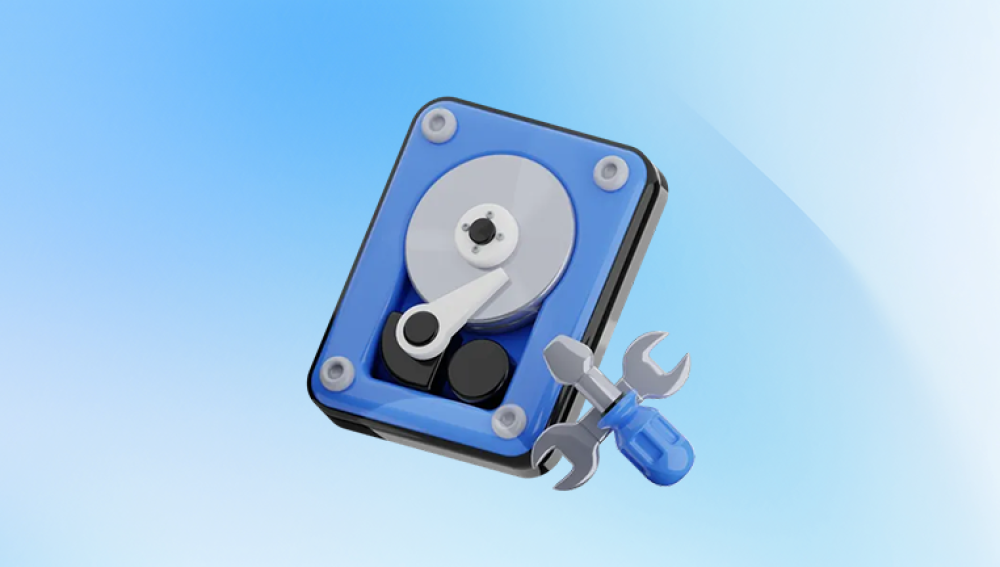External hard drives are essential for storing large amounts of data, whether it’s for personal use, business archives, or backup. However, they are susceptible to various issues such as accidental deletion, file corruption, and physical damage. Data loss can be frustrating, but many methods and tools can help retrieve those valuable files.
External Hard Drive Data Loss
Before diving into recovery methods, it’s crucial to understand the types of data loss that can occur with external hard drives:
Accidental Deletion or Formatting: Deleting files by mistake or formatting a drive can seem catastrophic, but often the data remains recoverable unless overwritten.
File Corruption: Corrupted files may be the result of malware, improper ejection, or system crashes. While they are sometimes irreparable, recovery is possible with the right tools.
Partition Issues: If the partition on the drive becomes damaged, the drive may not be recognized by the computer, leading to data inaccessibility.
Physical Damage: In cases of external damage to the drive, the recovery process can be more challenging and may require professional services.
Identifying the cause of data loss helps in choosing the appropriate recovery method and avoiding actions that might worsen the problem.

Immediate Steps After Data Loss
When you notice that data is missing, it's essential to act quickly and avoid actions that could overwrite or further damage the remaining data:
Stop Using the Drive: Continued use could overwrite deleted files, making recovery more difficult or impossible.
Check for Visible Issues: Inspect the external hard drive for any physical damage, unusual sounds, or error messages when connected to your computer.
Attempt a Reboot: Sometimes, a simple system restart or reconnecting the drive can resolve temporary glitches or file system errors.
Use Disk Utility (Mac) or Disk Management (Windows): These built-in tools can detect basic issues with external hard drives, such as hidden partitions or unassigned drive letters.
If these basic steps don’t resolve the issue, it’s time to consider software recovery or professional help.
Best Data Recovery Software for External Hard Drives:
Drecov Data Recovery
Drecov Data Recovery is a powerful and user-friendly software designed to help individuals recover lost or deleted files from various storage devices, including external hard drives, USB drives, SD cards, and more. Whether files were accidentally deleted, lost due to formatting, or impacted by system crashes, Drecov Data Recovery provides a reliable solution to restore data quickly and efficiently.
The software features an intuitive interface that allows users to navigate the recovery process with ease, even if they have minimal technical expertise. It supports a wide range of file formats, including photos, documents, videos, and audio files, ensuring comprehensive recovery options. Drecov Data Recovery also offers both quick and deep scanning modes, making it adaptable to different recovery needs.
How to Use Data Recovery Software
Once you’ve selected the appropriate software for your situation, follow these general steps to initiate the recovery process:
1. Download and Install the Software
Install the software on your computer but not on the external hard drive you wish to recover files from. This helps prevent overwriting data.
2. Connect the External Hard Drive
Ensure the hard drive is properly connected and recognized by your system.
3. Run a Scan
Open the data recovery tool and choose the external hard drive as the target for the scan. The software will perform a deep or quick scan depending on the software's capabilities and settings.
Quick Scan: Typically used for recently deleted files. It’s faster but may not recover all files.
Deep Scan: A thorough scan that dives into the drive's sectors to recover files, even if they are no longer visible or were previously corrupted.
4. Preview and Select Files
After the scan, the tool will list recoverable files. Many tools allow you to preview these files before recovering them.
5. Recover Files
Select the files you want to recover and choose a different storage location (not the same external hard drive) to save them. This ensures you don’t overwrite any other potentially recoverable data.
Troubleshooting Common Issues
Sometimes, even with recovery software, issues can arise that require additional steps:
1. Drive Not Recognized
Ensure all cables are correctly plugged in and try a different USB port. On Windows, go to Disk Management to assign a new drive letter if the drive is visible but not accessible.
2. Corrupt Files
If recovered files appear corrupted or incomplete, try using a deep scan mode. Some software, like EaseUS or Stellar, has specific options for recovering corrupted files.
3. Bad Sectors
External hard drives may have bad sectors that prevent file access. Some tools, like HDD Regenerator or TestDisk, can repair bad sectors, improving recovery chances.
Professional Data Recovery Services
If software recovery does not work, or if your external hard drive is physically damaged, you may need to seek help from a professional data recovery service. These services are equipped to handle issues beyond the capabilities of typical software, especially in cases of severe hardware damage.
What to Expect
Evaluation: Most professional services will perform an evaluation to determine whether the data is recoverable and what the cost will be.
Cost: Prices can vary significantly based on the extent of the damage and the complexity of the recovery. Expect to pay anywhere from $300 to $2.000 or more, depending on the issue.
Success Rate: Physical damage does not guarantee successful recovery, but most services will offer a "no recovery, no charge" policy.
Popular services include:
DriveSavers
Ontrack
Secure Data Recovery Services
Preventing Future Data Loss
To avoid future data loss, consider the following best practices:
Regular Backups: Always back up important files in multiple locations (e.g., cloud storage, another external hard drive). Consider using automated backup software like Acronis True Image or Backblaze.
Safely Eject Drives: Always use the “eject” or “safely remove” feature before unplugging an external hard drive to prevent file system corruption.
Monitor Hard Drive Health: Use tools like CrystalDiskInfo to monitor your drive’s health and detect potential issues early on.
Surge Protectors: Invest in a surge protector to prevent electrical damage to external drives.
Use Anti-virus Software: Keep your computer secure with updated anti-virus software to avoid malware that can damage or corrupt data.




